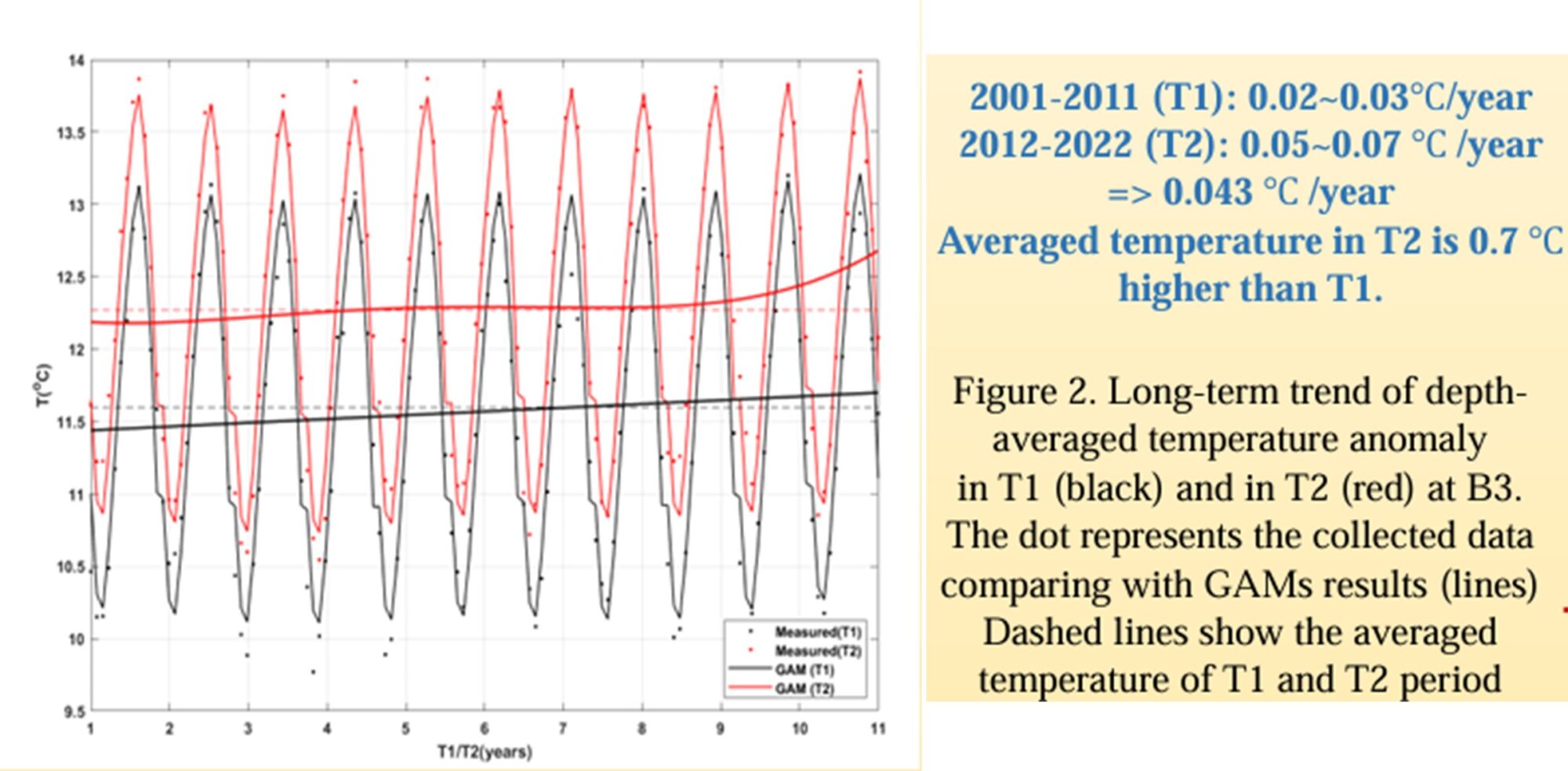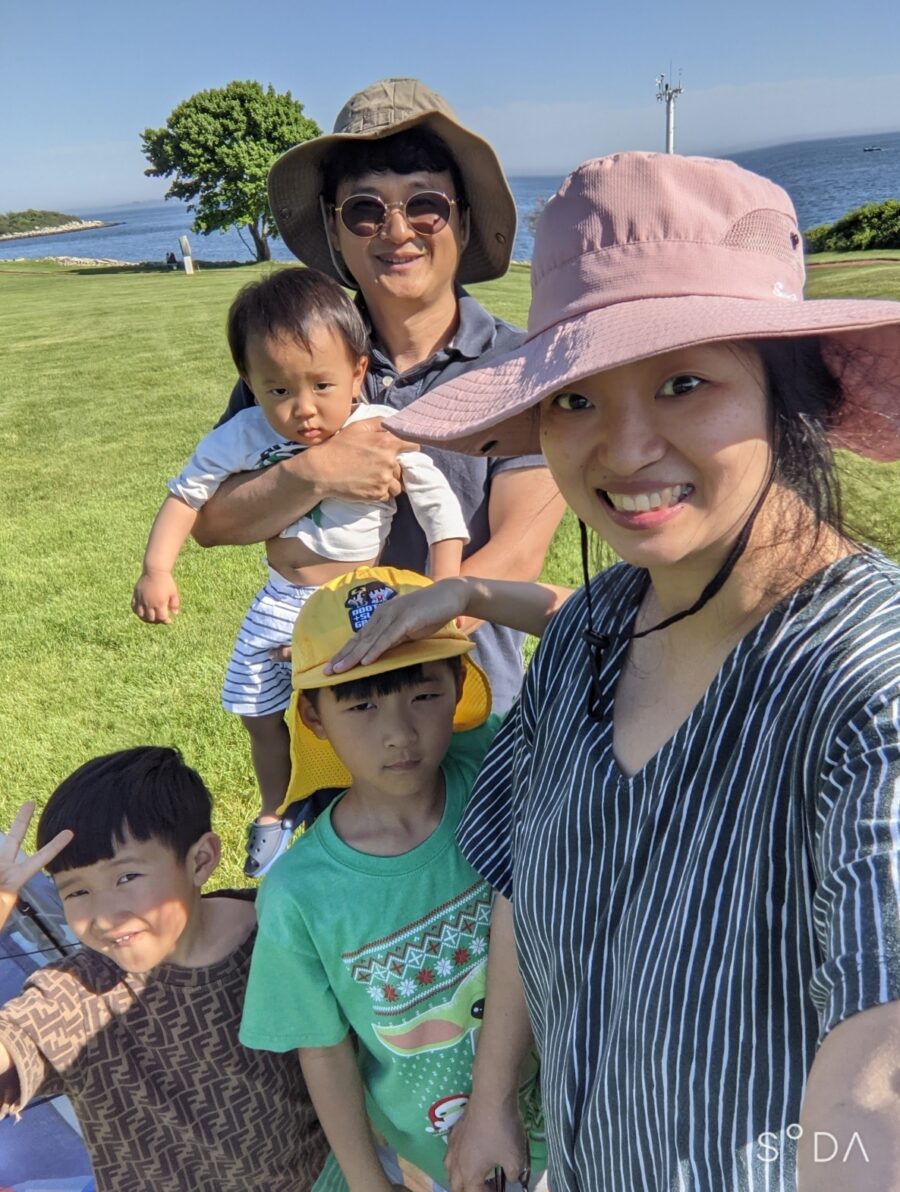EPA ORISE Fellow Explores What Plankton Communities Can Tell Us About Climate Change in Long Island Sound

Before earning her doctorate in physical oceanography at the University of Connecticut’s Avery Point Marine Science campus, Dr. Youngmi Shin completed a master’s degree in plasma and high-temperature physics at Dong-A University in Busan, South Korea. During her studies in Busan, she developed an interest in the health of oceans, linking it to her scientific career. After graduating, Dr. Shin contributed to a government project focused on analyzing biogeochemical ocean data, such as ocean acidification, warming temperatures, and decreasing oxygen levels, to understand the impact of human activity on ocean cycles.
Although a physicist by trade, Shin’s interest in oceanography grew gradually with the influence of her husband, who is a biological oceanographer. Together, they analyzed biogeochemical and physical data in South Korea, publishing a book by the National Fisheries Research and Development Institute (NFRDI) which included cartoon illustrations to help the public understand the importance of marine organisms and coastal environments. In 2009, they decided to move to the United States where Shin would further explore ocean spaces.
She attended UConn’s Avery Point campus in Groton, which overlooks Long Island Sound in eastern Connecticut, earning an additional master’s degree in oceanography and receiving a PhD in physical oceanography in 2019.
“Long Island Sound is a very interesting study area,” said Shin. “There are all sorts of people in communities and their interactions with the water. It is a big issue, the contamination of the water. If I can understand how people and nature interact with each other, and how scientists can support the protection of the natural body of water and help people understand that too — that’s a very interesting area for me. That’s how I chose the Long Island Sound and UConn.”
Shin’s thesis focused on studying wind and wave dynamics in the western Long Island Sound, where Stamford, the EPA office she works out of, is located. As a fetch-limited basin, an area where wave height is limited by the size of the wave generation area (or fetch), she found that wave creation and circulation are influenced by wind and surface wave-induced turbulent dynamics, which were not previously considered in existing models.
“That was my starting point for getting involved with the study,” said Shin.
LISS welcomed Shin in late November of 2023 as an EPA fellow through the Oak Ridge Institute for Science And Education (ORISE). Her work applies observational data from the Connecticut Department of Energy and Environmental Protection over 20 years to better define plankton parameters in water quality models. Using biogeochemical and statistical modeling, the LISS partners can better understand how climate change and nutrient reduction affect plankton communities.
“This data can improve how we anticipate climate change scenarios,” said Shin. “Most of the public has concerns about climate change and storms. The timing and intensity of storms have been changing, especially where people live along the coast in Connecticut and New York. This kind of water quality modeling is a very good approach to reduce their concerns and support policymaking.”
The process-based water quality model used by the EPA does not currently use information based on long-term time and measure of data. One finding of Shin’s analysis indicates that waters are warming at double the frequency they were in the previous decade and plankton have responded by changing their ecosystem dynamics and physiology. Their season peak has been shifting earlier because of warming. Using this information, managers can improve how they approach sensitivities to climate change in Long Island Sound.
“Until this project, I have been mainly focusing on the physical data like ocean turbulence dynamics, waves, currents, and wind,” said Shin. “This kind of various data, with it I can be more creative, and I can be more connected to the science and enjoy how they interact with each other. It is fascinating.”

“Youngmi’s research leverages both empirical and process-based modeling to improve our ability to simulate highly dynamic water quality conditions in Long Island Sound,” said Dr. Melissa Duvall, EPA’s Research and Modeling Lead for the Long Island Sound Study. “Her work will allow us to better model climate-driven changes in Sound water quality by accounting for variations in phytoplankton response to changing environmental conditions.”
For Shin, the ultimate goal will be to see how communities can benefit from the scientific models.
“I have been very excited to learn about the connection between science and politics and communicating with the public,” said Shin. “To me, science is life itself. Scientific thinking follows the structures we need to communicate with people. That was my original motivation from childhood—the way of scientific thinking that interprets life and nature.”

At home, Shin lives along the Connecticut coastline and finds her own unique way to communicate and educate science to a few young members of the public.
“Every summer we make a saltwater pool for the kids in our backyard,” said Shin. “My husband and I are oceanographers, so we are measuring the salinity from the pump to teach them from our swimming pool.”
Her family also finds time on the weekends to visit the Sound’s beaches, collecting rocks and seashells with her children and using them to explain the physics of water friction and erosion.
“We can educationally approach teaching to the children with the environment of the water,” said Shin. “If there’s an ocean breeze, my husband and I know the timing of the tides and wind direction, so we use that information to apply in our recreation time. How to make a kite fly based on the direction of the wind and how to orient the kite. It’s very useful scientific information to my kids.”